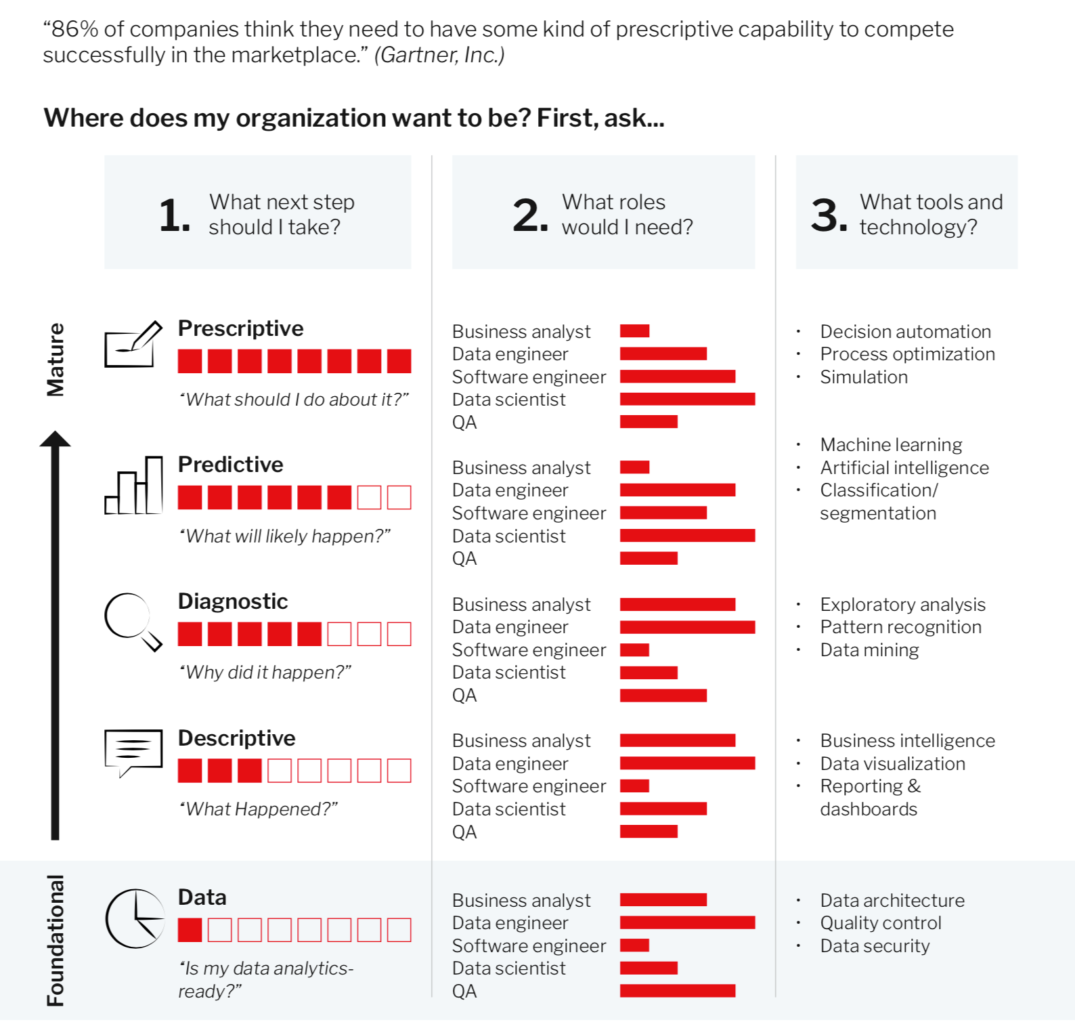
The data strategy rotation of our new internship program provides participants with hands-on experience building and implementing data strategies — and elevates our diversity of thought.
As the data landscape has evolved, a new generation of technologies has emerged — the era of Big Data has dwindled to make way for real-time analytics, multi-cloud support, and machine learning. In conjunction with these sea changes has been a growing demand for data & analytics talent. Unfortunately, there exists a significant gap that must be bridged between data & analytics talent supply and demand. And today’s organizations cannot afford to stagnate — if they do not invest in strong data & analytics talent, they risk falling behind.
In the coming five to ten years, Gen Z-ers will enter the workforce en masse. They will shape the talent pool of the future and become key market players. They will define the future of data & analytics. Organizations need to adapt accordingly by increasing the diversity of their thinking and embracing fresh perspectives that will help them remain relevant and continually modernize their practices and solutions.
SEI recently completed its first-ever data strategy rotation — one of six rotations in a recently-launched beta internship program focused on developing participants’ data & analytics skills through hands-on work. In this article, we’ll cover the importance of a well-thought-out data strategy, the benefits that the internship offers to both participants and SEI, and the value of diversification of thought in shaping scalable, flexible data strategies.
The Components of a Well-Planned Data Strategy
At its core, a data strategy is a plan of action designed to achieve a set of business goals through data & analytics.
A common mistake that organizations make is establishing siloed business and data goals. Building strategies to address separate business and data objectives often leads to redundancies, disjunctive processes, ineffectual communication, and ultimately, hampered productivity. Instead, business and data strategies should work in tandem to address gaps in existing processes and opportunities for growth. The most effective strategies welcome outside-of-the-box ideas and a variety of perspectives for solving problems and reaching both business and data goals.
Since effective data strategies are interwoven with business strategies, it’s important to define not only the data types and technologies required to reach agreed-upon objectives, but a range of variables including people and processes. Further, a successful data strategy is designed to adapt and scale in response to evolving needs, changing circumstances, and technological advances. A company’s data strategy should be a living, breathing set of approaches that evolve and grow with the organization.
The following image depicts SEI’s data & analytics maturity model:

Establishing a robust data strategy includes four key steps:
- Aligning data & analytics with key business objectives
- Cultivating a culture of data-driven goals by creating inclusive idea incubation efforts
- Providing transparency and access to data
- Being flexible and continuing to iterate on ideas that succeed or fail

Advantages and Key Takeaways for Internship Participants
Understanding how to develop an effective data strategy is a crucial skill for prospective data & analytics employees. And while universities and specialized bootcamps do an excellent job of providing participants with the technical foundations for success, up-and-coming data & analytics talent are often limited in their exposure to real-world applications of their skills.
SEI’s internship program was designed to account for this gap. Specifically, within the data strategy rotation, we enhance interns’ understanding of the following:
- The overall lifecycle of data projects and programs
- How to develop a robust data strategy in which data and business objectives work in unison
- Customized approaches to data & analytics that address an organization’s unique needs, structure, and culture
- Flexible thinking in terms of solution development
- The various considerations and components of an effective data strategy
- Build scalable architectures that allow for future needs and technological modernization
- How to become a data novelist/journalist by telling concise stories catered to specific audiences
Upon the conclusion of the data strategy rotation, intern Elise Joyce noted: “Being exposed to and learning the end-to-end lifecycle of data through SEI’s internship program has really allowed me to put what I have learned in undergrad and bootcamps into practice on a whole different level — in that it’s so important to get a good grasp of business goals before starting to build on the data itself.”
The Benefits of a Data & Analytics Internship Program for SEI
The SEI data & analytics program adds value to more than just the interns themselves. SEI has already begun to reap a number of benefits of the program.
Historically, our employee model has been restricted to include only the most well-established and seasoned consultants. While this approach adds value by providing clients with unmatched levels of trust and quality, the downside is that we often find ourselves on the tail-end of exposure to new generations of talent.
SEI’s data & analytics internship program has not only injected a fresh perspective into our way of thinking about our solutions and delivery model, but has also catalyzed more innovative methods of tackling our clients’ problems.
The Value of Diversity of Thought in Shaping Our Data & Analytics Future
As the global diversification of thought and technology accelerates, it’s crucial that organizations identify new and effective ways to design data strategies that propel their success. One way to do so effectively is to build a team with a diversity of perspectives, which has been proven to drive innovation and improve problem-solving efficacy.
For SEI, this internship program has been an effective means of elevating our diversity of thought as we continue to move towards a future full of technological and business uncertainty. We’re committed to challenging our preexisting methodologies, patterns of thought, and delivery models in order to add value to our clients’ businesses and to position SEI as a key player in the future of data & analytics.
SEI will continue to provide updates and insights gained from our data & analytics internship program. The remaining program rotations will cover human-centered design, data engineering, data journalism and data visualization, data science, and management reporting.





